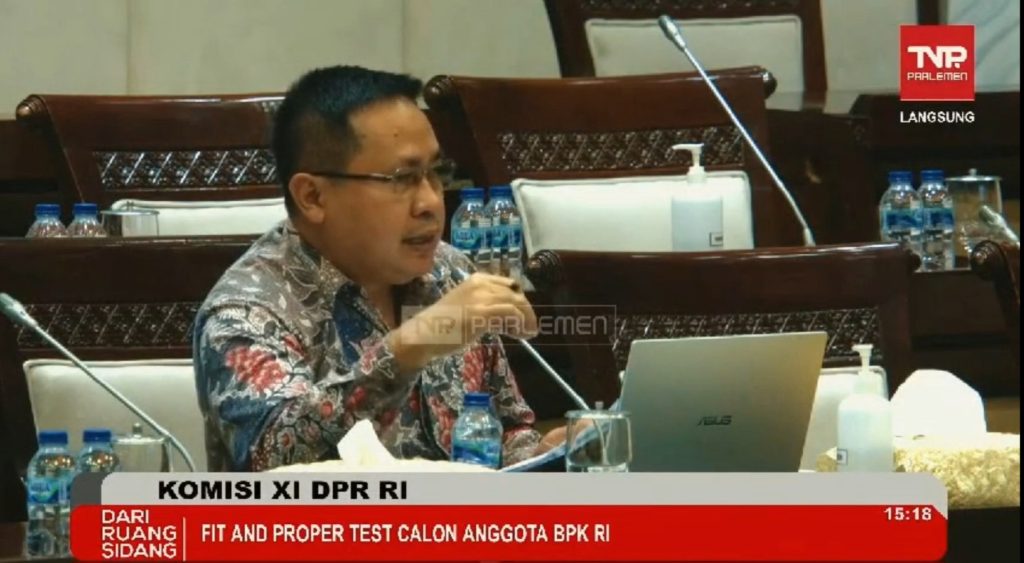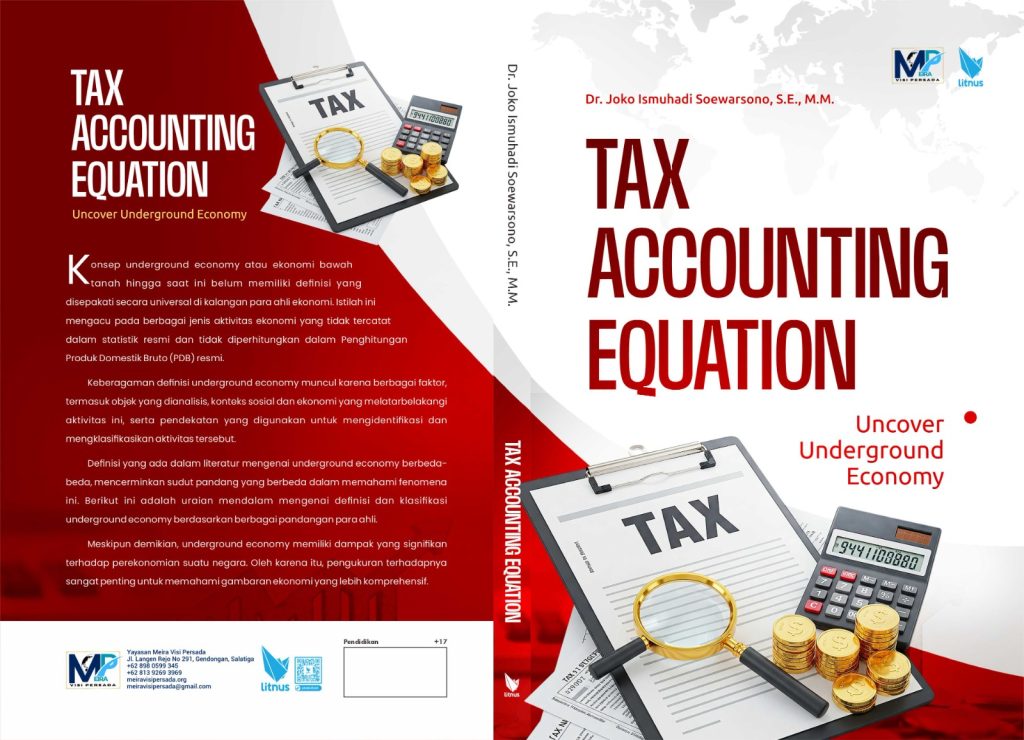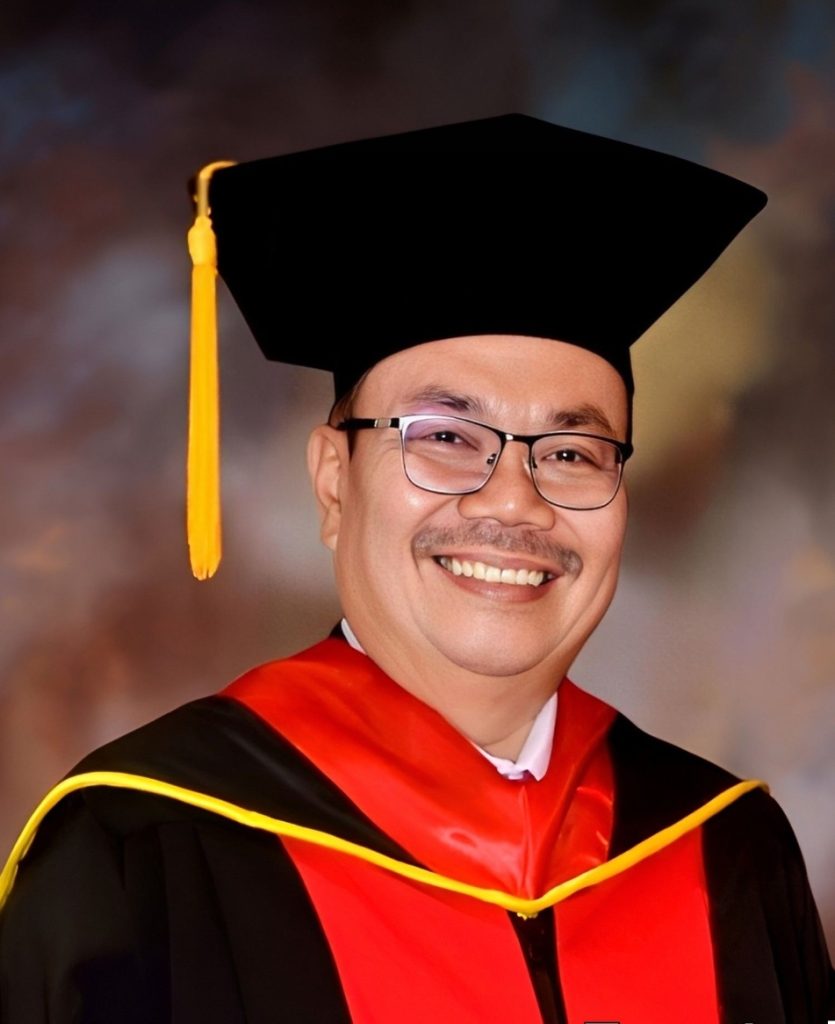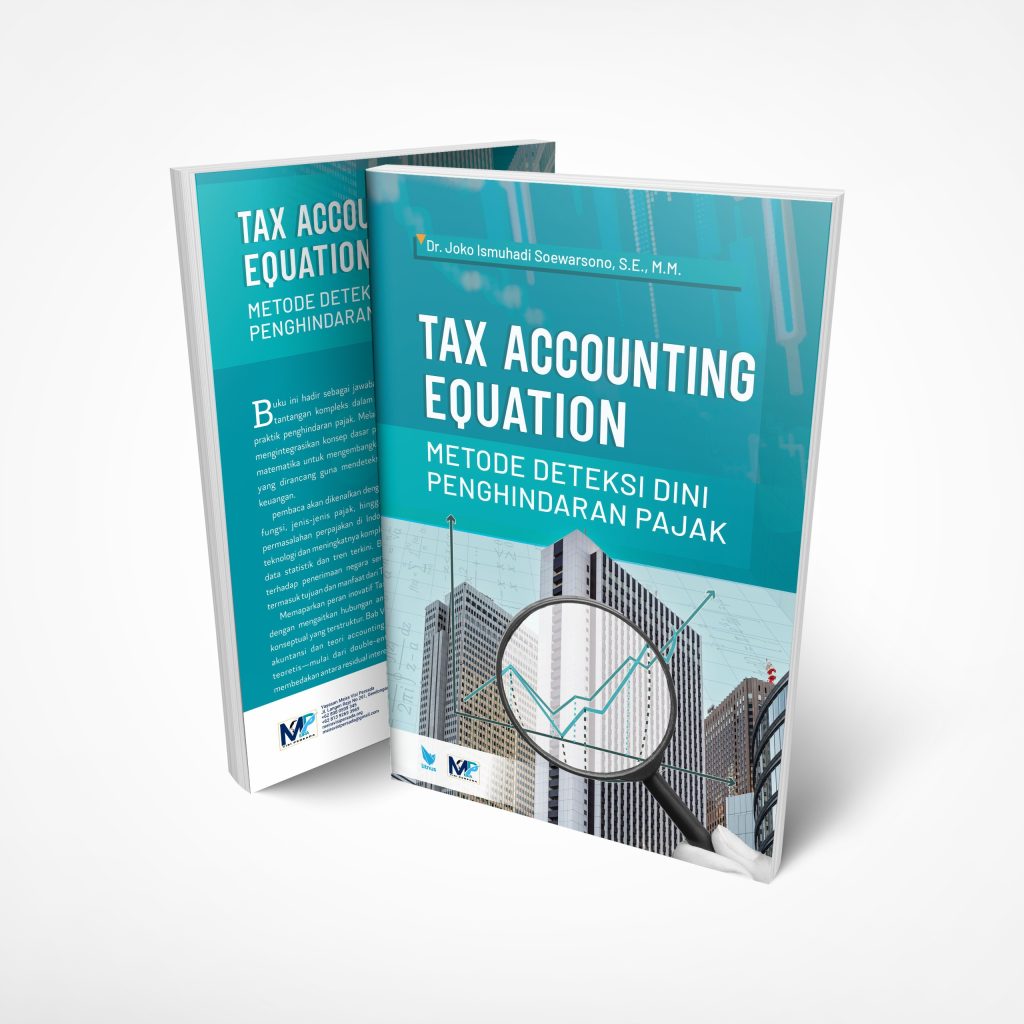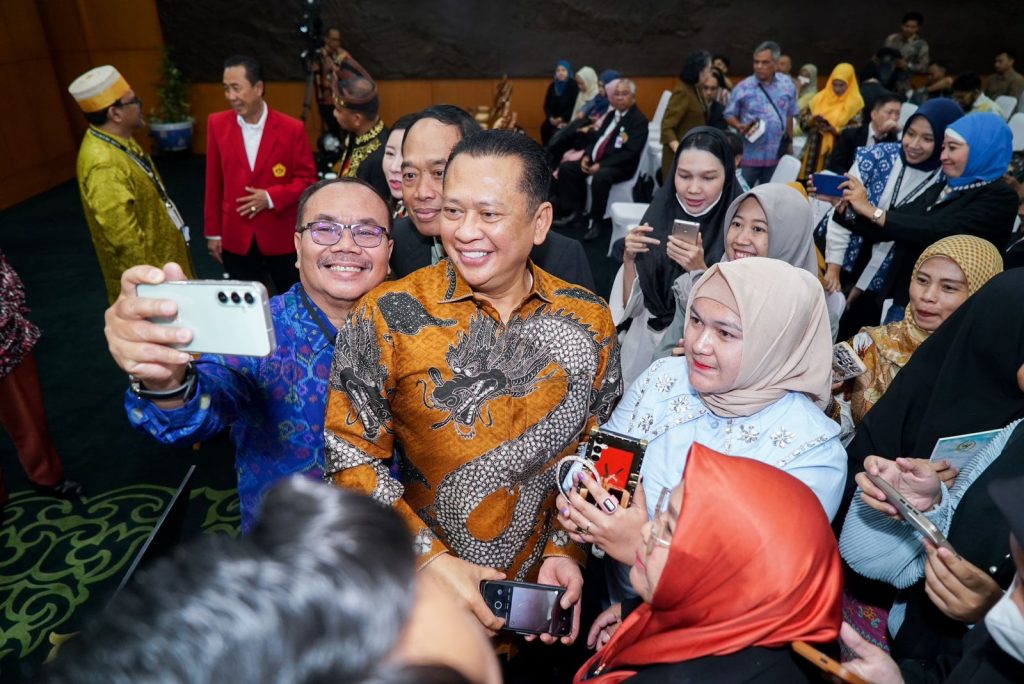
Ismuhadi’s Equation: A Novel Forensic Accounting Tool for Enhanced Tax Enforcement in Indonesia
- Ekonomi
Sunday, 27 April 2025 00:24 WIB
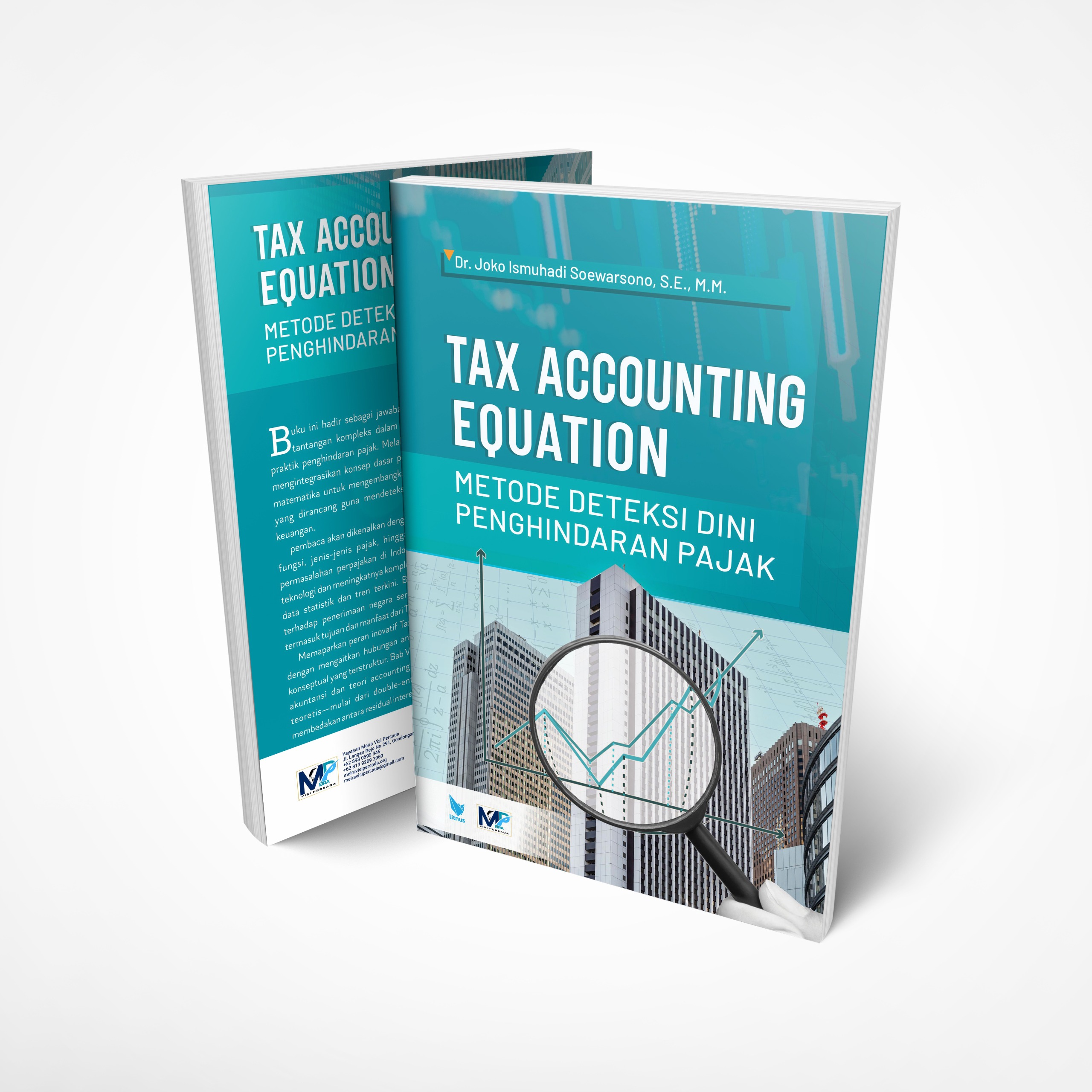
Jakarta, fiskusnews.com:
1. Introduction: The Imperative for Enhanced Tax Enforcement in Indonesia and the Advent of Ismuhadi’s Equation
The persistent challenge of tax avoidance and evasion represents a significant impediment to the fiscal health and economic development of nations worldwide, and this issue is particularly pronounced in emerging economies such as Indonesia. The ability of corporations and high-net-worth individuals to employ sophisticated strategies aimed at minimizing their tax liabilities necessitates the continuous development and implementation of innovative tools and techniques for effective detection and prevention. The erosion of the tax base through such practices undermines the government’s capacity to adequately fund essential public services, invest in critical infrastructure, and promote equitable economic growth. Consequently, there is a constant need for advancements in methodologies that can identify and deter tax-related financial misconduct.
Forensic accounting plays a pivotal role in this context, providing the specialized skills and investigative techniques required to scrutinize complex financial data and uncover evidence of financial crimes, including those related to tax evasion and embezzlement, within the Indonesian economic landscape. This discipline combines accounting expertise with investigative acumen to analyze financial discrepancies, identify fraudulent activities, and provide support for legal proceedings. As financial transactions become increasingly intricate and globalized, the importance of forensic accounting in safeguarding national revenues and ensuring fair tax compliance continues to grow.
In response to the enduring challenges of tax avoidance and the need for more effective detection mechanisms tailored to the Indonesian context, Dr. Joko Ismuhadi Soewarsono, an Indonesian tax expert, has developed the Tax Accounting Equation (TAE). This innovative forensic accounting tool leverages fundamental accounting relationships to analyze financial statements and identify potential irregularities that may be indicative of tax evasion or hidden economic activities. TAE represents a targeted and data-driven approach to tax enforcement, offering a novel method for scrutinizing financial data to uncover patterns and discrepancies that might otherwise remain undetected through traditional audit procedures. Its development signifies a crucial step towards enhancing tax compliance and combating financial crime in Indonesia.
2. Dr. Joko Ismuhadi Soewarsono: The Intellectual Force Behind the Tax Accounting Equation
Dr. Joko Ismuhadi Soewarsono stands as a prominent figure in the Indonesian tax landscape, distinguished by his ability to seamlessly integrate rigorous academic inquiry with extensive practical experience in tax administration. His active membership in esteemed organizations such as the Association of Tax Centers and Tax Academics of All Indonesia (Pertapsi) and the Association of Indonesian Legal Experts (Perkahi) underscores his recognized standing and active engagement within the Indonesian tax and legal scholarly communities. These affiliations highlight his commitment to professional development and his contribution to the ongoing dialogue on financial and corporate governance in Indonesia.
Dr. Soewarsono’s comprehensive educational background further solidifies his expertise in the field. He holds a financial diploma specializing in taxation, demonstrating an early focus on this critical area. His attainment of a Master of Science degree signifies his commitment to advanced academic study. Notably, he is currently pursuing doctoral studies in both tax accounting and tax criminal law, showcasing a profound and multifaceted understanding of taxation from both financial and legal perspectives. This rigorous academic training equips him with a deep theoretical foundation that underpins his innovative work in tax analysis.
Complementing his academic achievements is Dr. Soewarsono’s significant practical experience within the Indonesian tax administration. He has served as a tax audit practitioner and supervisor within the Directorate General of Taxes (DGT) for a considerable period. This direct involvement in tax enforcement provides him with invaluable real-world insights into the challenges faced by tax authorities and the diverse methods employed by individuals and entities to evade their tax obligations. His hands-on experience allows him to ground his academic research in the practical realities of tax administration, making his proposed solutions particularly relevant and implementable within the existing framework.
Beyond his core expertise in tax auditing and law, Dr. Soewarsono possesses a broad range of skills in diverse financial domains. These include tax planning, financial engineering, corporate finance, valuation, and mergers and acquisitions. This wide-ranging expertise provides him with a holistic understanding of the intricate financial strategies that can be utilized for tax avoidance, enabling him to develop more effective tools for detection. His integrated approach, combining practical tax auditing with academic inquiry, positions him uniquely to contribute meaningfully to both the theoretical and practical aspects of taxation in Indonesia.
3. Deconstructing the Tax Accounting Equation (TAE): A Forensic Lens on Financial Statements
Ismuhadi’s Tax Accounting Equation (TAE) is not an arbitrary formula but is firmly rooted in the fundamental principles that govern the field of accounting. It draws its foundation from the basic Accounting Equation, which states that a company’s Assets are equal to the sum of its Liabilities and Equity (Assets = Liabilities + Equity). Furthermore, it is also derived from the Expanded Accounting Equation, which incorporates the income statement elements, presenting the relationship as Assets + Expenses = Liabilities + Equity + Revenue. Dr. Soewarsono has astutely adapted these core principles to create a tool specifically designed for the forensic analysis of financial statements from a tax perspective.
The TAE is presented in two distinct but interconnected forms, each offering a unique perspective on the expected financial relationships within a company:
Form 1: Revenue – Expenses = Assets – Liabilities
This formulation of the TAE directly compares a company’s profitability, as reflected in its income statement (calculated as Revenue minus Expenses), with its net worth or net assets, as presented on its balance sheet (calculated as Assets minus Liabilities). The underlying principle is that a company’s profitability over a period should logically contribute to its overall net worth. A significant imbalance in this equation, such as a company consistently reporting low profits despite demonstrating a substantial accumulation of net assets, could serve as an indicator of potential financial manipulation aimed at reducing tax liabilities. For instance, such a discrepancy might suggest that the company has been underreporting its revenue or concealing assets, or conversely, overstating its expenses or liabilities to artificially lower its taxable income.
Form 2: Revenue = Expenses + Assets – Liabilities
The second form of the TAE emphasizes that the total revenue reported by a company should be sufficient to cover all of its operating expenses and also contribute to the growth of its net assets (Assets minus Liabilities). This equation highlights the logical expectation that revenue generation should not only sustain the company’s current operations but also facilitate an increase in its overall wealth. An unusually low level of reported revenue in comparison to the sum of expenses and the change in net assets over a period might raise suspicion of unrecorded income or the misclassification of revenue transactions. For example, Dr. Soewarsono posits that in cases of tax avoidance, companies might strategically misclassify actual revenue as liabilities to understate their taxable income, thereby distorting the expected equilibrium in this form of the TAE.
The underlying logic of TAE as a forensic accounting tool for tax analysis lies in its targeted approach to scrutinizing the fundamental relationship between the income statement and the balance sheet. These two primary financial statements are often the focal points of manipulation when entities attempt to evade taxes. By providing a quantifiable framework based on established accounting principles, TAE enables tax authorities and forensic accountants to systematically analyze financial data for deviations from expected norms. These deviations can then serve as crucial indicators of potentially misleading accounting practices and may warrant further, more detailed investigation to uncover the underlying tax avoidance schemes or embezzlement activities.
To further understand the context and derivation of TAE, it is beneficial to compare it with the fundamental accounting equations it builds upon. The following table provides a comparative overview:
| Equation Name | Formula | Primary Focus/Purpose | Creator/Origin |
|---|---|---|---|
| Basic Accounting Equation | Assets = Liabilities + Equity | Fundamental relationship between a company’s resources (assets) and its obligations. | Generally accepted principle |
| Expanded Accounting Equation | Assets + Expenses = Liabilities + Equity + Revenue | Incorporates income statement elements to show the flow of resources. | Generally accepted principle |
| Tax Accounting Equation (Form 1) | Revenue – Expenses = Assets – Liabilities | Highlights the equilibrium between profitability and net worth for tax analysis. | Dr. Joko Ismuhadi Soewarsono |
| Tax Accounting Equation (Form 2) | Revenue = Expenses + Assets – Liabilities | Emphasizes the sufficiency of revenue to cover expenses and asset growth for tax analysis. | Dr. Joko Ismuhadi Soewarsono |
4. Unveiling Financial Irregularities: Practical Applications of TAE in the Indonesian Context
Ismuhadi’s Tax Accounting Equation (TAE) serves as a valuable initial screening mechanism and an early warning indicator for the potential presence of tax avoidance and embezzlement within the financial records of Indonesian entities. Significant deviations from the expected financial relationships as defined by either form of the TAE can act as prominent red flags, immediately alerting tax authorities and forensic accountants to the possibility of financial irregularities. These discrepancies then warrant a more thorough and in-depth investigation into the taxpayer’s financial affairs to ascertain the underlying causes and determine if any illicit activities, such as tax evasion or embezzlement, have occurred.
The practical application of TAE lies in its ability to identify specific types of financial manipulation that are commonly employed to reduce tax liabilities or conceal illicit gains. For instance, the first form of the TAE (Revenue – Expenses = Assets – Liabilities) can be particularly effective in detecting instances of understated revenue or assets. If a company consistently reports low profitability, suggesting a minimal tax obligation, yet simultaneously exhibits a substantial and unexplained growth in its net assets over time, this imbalance could indicate that the company is not fully reporting its revenue or is concealing assets from the tax authorities. This might involve off-book sales, delayed recognition of revenue, or the use of hidden accounts to accumulate wealth that has not been subjected to taxation.
Conversely, the same form of the TAE can also help in identifying overstated expenses or liabilities. In situations where a company reports consistently low profits despite having a seemingly reasonable level of revenue, the equation might reveal a significant discrepancy between profitability and net asset accumulation. This could be a sign that the company is artificially inflating its expenses or creating fictitious liabilities in an attempt to reduce its taxable income [User Query]. Such practices aim to lower the reported profit, thereby decreasing the amount of tax owed to the government.
The second form of the TAE (Revenue = Expenses + Assets – Liabilities) is particularly useful in uncovering unrecorded income or misclassified transactions. If a company reports an unusually low level of revenue in relation to its operational expenses and the apparent growth in its net assets, it could suggest that the company has income that has not been recorded in its books or has intentionally misclassified revenue as something else, such as liabilities, to avoid immediate tax recognition. Dr. Soewarsono specifically highlights the potential misclassification of income as liabilities as a common tax avoidance strategy that this form of the TAE can help to detect. For example, a company might record actual sales revenue as “advances from customers,” which are classified as liabilities on the balance sheet, thereby understating its reported revenue and its corresponding tax obligation.
To further illustrate the practical application of TAE in the Indonesian business environment, consider a few hypothetical scenarios. Imagine a Crude Palm Oil (CPO) company that has shown consistent revenue growth over several years. However, in the latest fiscal year, the company reports a significant and unexplained drop in its profitability, while its total assets have substantially increased. Applying the first form of TAE would reveal a notable imbalance: a low value on the left side (low profit) and a high value on the right side (high net assets). This discrepancy could prompt Indonesian tax authorities to investigate whether the company has been underreporting its revenue from CPO sales.
In another scenario, consider a service-based company that reports unusually low revenue for the fiscal year, significantly lower than its stated operating expenses. Simultaneously, the company’s liabilities have decreased substantially, but there is no corresponding decrease in assets or increase in equity that would typically explain such a liability reduction. Using the second form of TAE, the low revenue figure, coupled with the decrease in liabilities, would create an imbalance. This situation could indicate that the company has inflated its expenses to reduce its taxable income, and the reduction in liabilities might be linked to transactions that were not properly accounted for as revenue.
Finally, imagine a multinational company operating in Indonesia that reclassifies a significant portion of its sales revenue as “advances from customers” in its financial statements. This reclassification shifts the amounts from a revenue account to a liability account. Applying TAE, particularly the second form, would show an unusually low revenue figure and a corresponding increase in…source
5. TAE and the Indonesian Underground Economy: Illuminating the Shadows
The underground economy in Indonesia represents a significant and pervasive aspect of the nation’s economic landscape. It encompasses a wide array of economic activities that operate largely outside the formal regulatory and taxation frameworks established by the government. This hidden sector includes unregistered informal businesses, transactions conducted primarily using cash and not formally recorded, and deliberate efforts by individuals and entities to conceal their economic activities from government authorities with the primary goal of avoiding tax payments and regulatory oversight. Various estimates suggest that the size of Indonesia’s underground economy is substantial, potentially accounting for a significant portion, ranging from 30% to 40%, of the country’s total Gross Domestic Product (GDP). This vast hidden sector presents a formidable challenge for tax authorities seeking to broaden the tax base and maximize revenue collection.
Ismuhadi’s Tax Accounting Equation (TAE) offers a valuable tool for potentially shedding light on some of the financial aspects of this shadow economy. While the very nature of the underground economy means that direct financial data is often unavailable or deliberately concealed, TAE can be applied to the financial statements of entities or individuals who are suspected of being involved in or benefiting from activities within this informal sector. By analyzing the reported financial data of these potentially linked entities, tax authorities and forensic accountants can look for unusual patterns or imbalances as defined by TAE.
For instance, if an individual or a formally registered company is suspected of deriving significant income from unreported activities in the underground economy, the application of TAE to their financial statements might reveal discrepancies. The first form of the equation (Revenue – Expenses = Assets – Liabilities) could highlight a situation where an individual or company with seemingly low reported income possesses a disproportionately high level of assets. This imbalance might suggest that the individual or company has an additional, unreported source of income from the underground economy that is contributing to their asset accumulation but is not being reflected in their reported revenue for tax purposes. Similarly, the second form of the equation (Revenue = Expenses + Assets – Liabilities) could reveal unusually low reported revenue compared to the level of expenses and the growth in assets, potentially indicating that income from underground activities is not being fully accounted for.
By systematically applying TAE to the financial data of those suspected of participating in the underground economy, Indonesian tax authorities can gain valuable insights into the potential scale and financial characteristics of these hidden economic activities. Understanding the patterns of imbalances identified by TAE in such cases can help authorities to develop more targeted and effective strategies for detecting and addressing tax evasion associated with the informal sector. While TAE may not directly reveal the specific transactions occurring within the underground economy, it can serve as a crucial indicator, prompting further investigation and the use of other forensic accounting techniques to uncover the full extent of these hidden economic activities and their impact on tax revenue.
6. TAE as a Catalyst for Enhanced Tax Enforcement and Policy Innovation in Indonesia
Ismuhadi’s Tax Accounting Equation (TAE) holds significant potential to provide Indonesian tax authorities with crucial data-driven insights into the prevailing patterns and methods of tax evasion within the country. By systematically applying TAE to the financial statements of a wide range of taxpayers, the Directorate General of Taxes (DGT) can identify recurring imbalances and correlations that may indicate common tax avoidance strategies being employed across different sectors and industries. This data-informed approach can move tax auditing from a more reactive stance to a proactive one, allowing authorities to better anticipate and detect potential instances of tax non-compliance.
The knowledge gained from analyzing financial data through the lens of TAE can directly contribute to the development of more targeted and effective tax policies and enforcement strategies in Indonesia. For example, if TAE consistently flags specific sectors or types of transactions as exhibiting a higher propensity for imbalances indicative of tax evasion, the DGT can then focus its audit resources and efforts on these high-risk areas. Furthermore, the insights derived from TAE can inform the design of more robust tax regulations aimed at closing loopholes or addressing specific manipulation techniques that are identified through the equation’s application. This evidence-based approach to policy formulation and enforcement can lead to a more efficient allocation of audit resources, improved tax compliance rates, and ultimately, an increase in overall tax revenue for the government.
The potential for the adoption and integration of TAE within the operational framework of the DGT in Indonesia appears promising. Dr. Soewarsono himself presented his Tax Accounting Equation during a Focus Group Discussion held at the Head Office of the Directorate General of Taxes. This indicates a formal introduction of the concept to the Indonesian tax authorities and suggests a level of interest and consideration for its potential implementation within the tax administration system. Given Dr. Soewarsono’s own extensive background as a tax auditor and supervisor within the DGT, there is a strong possibility that his research and the TAE could be seriously considered for adoption or integration into existing tax audit procedures.
The implementation of TAE would align well with Indonesia’s broader national objectives of enhancing tax compliance, broadening the tax base, and augmenting overall tax revenue collection. By providing a novel and potentially effective tool for the early detection of tax avoidance and activities within the underground economy, TAE directly supports these crucial goals. The adoption of such innovative methods can contribute to a more robust and efficient tax system in Indonesia, which is essential for supporting the nation’s economic development and ensuring a fairer distribution of the tax burden. The increased financial transparency and accountability that TAE aims to promote could ultimately lead to a more equitable tax system for all stakeholders in Indonesia.
7. TAE Within the Spectrum of Forensic Accounting Techniques in Indonesia: Synergies and Unique Contributions
Ismuhadi’s Tax Accounting Equation (TAE) occupies a specific niche within the broader landscape of forensic accounting tools and methodologies currently employed in Indonesia for the detection of tax evasion. While TAE primarily focuses on the analysis of financial statements through a specific equation-based framework, other forensic accounting techniques used in Indonesia encompass a wider range of approaches. These include digital forensics, which involves the recovery and analysis of electronic data ; advanced data analytics, which utilizes statistical and computational methods to identify patterns and anomalies in large datasets ; the implementation of whistleblowing systems to encourage the reporting of suspected fraudulent activities ; and traditional audit procedures, which involve detailed examination of financial records and internal controls.
TAE’s unique contribution lies in its direct and quantifiable approach to analyzing the fundamental relationships between key components of a company’s financial statements – revenue, expenses, assets, and liabilities – specifically for the purpose of identifying potential tax-related irregularities. This equation-based methodology offers a distinct perspective compared to other forensic techniques. For example, while digital forensics might be used to uncover hidden transactions or deleted records, and data analytics might identify unusual patterns across a large number of accounts, TAE provides a more direct assessment of the overall financial statement equilibrium from a tax perspective.
The potential for synergies and complementarity between TAE and other forensic accounting techniques in Indonesia is significant. TAE can effectively serve as an initial screening tool to identify entities whose financial statements exhibit anomalies or imbalances that warrant further investigation using more granular techniques. For instance, if TAE flags a company due to a significant discrepancy between its reported profit and net assets, tax authorities might then employ digital forensics to delve deeper into the company’s electronic records to uncover the specific transactions or accounts contributing to this imbalance. Similarly, data analytics could be used to apply TAE across a large database of corporate financial statements to identify outliers, which could then be subjected to more focused forensic audits utilizing a combination of techniques.
By strategically combining TAE with other available forensic accounting approaches, Indonesia can develop a more comprehensive and robust framework for detecting and combating tax evasion. This multi-layered strategy would leverage the unique strengths of each technique, with TAE providing an initial broad analysis and other methods offering more in-depth investigative capabilities. For example, insights gained from whistleblowing reports could be used to inform the application of TAE, focusing on specific areas or transactions suspected of manipulation. Ultimately, an integrated approach that strategically incorporates TAE is likely to yield the most effective results in addressing the complex and evolving challenges of tax evasion in Indonesia.
8. Navigating Potential Limitations and Addressing Potential Critiques of TAE
While Ismuhadi’s Tax Accounting Equation (TAE) presents a promising tool for enhancing tax enforcement in Indonesia, it is important to acknowledge its potential limitations, which can be inferred from the available research material. One potential limitation lies in TAE’s primary focus on financial statement analysis. The equation relies on the data that is reported within a company’s financial statements, and therefore, it might not be as effective in detecting tax evasion that occurs entirely outside of these recorded transactions. For instance, income generated through entirely off-the-books activities might not create imbalances detectable by TAE.
Another potential limitation is the susceptibility of TAE to sophisticated manipulation. Highly skilled taxpayers employing complex financial engineering techniques might be able to structure their transactions in a way that avoids creating easily detectable imbalances in the core accounting equation. For example, intricate schemes involving offshore accounts or disguised transactions might not be readily apparent through a simple analysis of the relationship between revenue, expenses, assets, and liabilities.
Furthermore, the effectiveness of TAE might vary across different industries and business models. The inherent differences in financial structures, reporting norms, and common tax avoidance practices across various sectors could mean that the thresholds for what constitutes a significant imbalance in the TAE might need to be adjusted or interpreted differently depending on the industry. The case study mentioned in one source focuses on the Crude Palm Oil (CPO) industry, suggesting that the application and interpretation of TAE might require industry-specific considerations.
Finally, the utility of TAE as a forensic tool is inherently dependent on the integrity of the underlying financial data. While TAE aims to detect manipulation within the reported data, if the foundational financial information provided by the taxpayer is grossly inaccurate or entirely fabricated, the equation might not be able to effectively identify the underlying fraud or tax evasion.
Interestingly, the provided research snippets do not contain explicit critiques or scholarly debates specifically focused on the limitations or shortcomings of TAE. The majority of the sources present TAE in a positive light, emphasizing its potential as an innovative tool for tax enforcement in Indonesia. Several articles and presentations focus on explaining the principles behind TAE and illustrating its potential applications in detecting tax avoidance and understanding the underground economy. This absence of explicit criticism in the current research does not necessarily mean that TAE is without limitations, but rather that the available material primarily focuses on its introduction and potential benefits. As TAE gains wider recognition and potential implementation, it is likely that more in-depth scholarly analysis and critical evaluations will emerge.
9. Conclusion: Ismuhadi’s Equation as a Promising Tool for Advancing Tax Governance in Indonesia
In conclusion, Ismuhadi’s Tax Accounting Equation (TAE) represents a novel and potentially valuable forensic accounting tool developed by Dr. Joko Ismuhadi Soewarsono to address the persistent challenges of tax avoidance, embezzlement, and the underground economy in Indonesia. By analyzing the fundamental relationships between a company’s revenue, expenses, assets, and liabilities through two distinct but related equations, TAE offers a structured and quantifiable approach to identifying potential financial irregularities that may be indicative of tax-related misconduct. Its derivation from core accounting principles lends it a strong theoretical foundation, while Dr. Soewarsono’s extensive practical experience within the Indonesian Directorate General of Taxes (DGT) ensures its contextual relevance and potential for real-world application.
TAE holds significant promise for modernizing tax auditing practices in Indonesia and enhancing the overall level of financial transparency within the tax system. By providing tax authorities with data-driven insights into potential tax evasion patterns and methods, TAE can contribute to the development of more targeted and effective tax policies and enforcement strategies. Its potential to illuminate the financial aspects of Indonesia’s substantial underground economy further underscores its importance in the national effort to broaden the tax base and increase revenue collection. While TAE offers a unique and valuable perspective, it is important to recognize its potential limitations, such as its reliance on financial statement data and its susceptibility to sophisticated manipulation. Therefore, a strategic approach that integrates TAE with other complementary forensic accounting techniques, such as digital forensics and data analytics, is likely to yield the most comprehensive and effective results in combating tax evasion.
To further realize the full potential of TAE, future research should focus on conducting rigorous empirical studies to evaluate its effectiveness across various industries and organizational sizes in Indonesia. The development of specific guidelines, protocols, and potentially software tools for integrating TAE into the DGT’s existing tax audit procedures would also be a crucial step towards its practical implementation. Furthermore, exploring optimal ways to combine TAE with other forensic accounting techniques and advanced data analytics capabilities could lead to a more robust and resilient tax evasion detection framework. Finally, analyzing potential taxpayer behavioral responses to the implementation of TAE and developing adaptive strategies to refine its efficacy would be a valuable area for future investigation. By pursuing these research avenues and strategically implementing TAE, Indonesia can take significant strides towards fostering a fairer, more equitable, and more efficient tax system that effectively supports its national economic development goals.
Reporter: Marshanda Gita – Pertapsi Muda
Share
Berita Lainnya
The Tax Accounting Equation: A Forensic Tool for Enhanced Tax Enforcement in Indonesia
P3KPI selenggarakan Edukasi Coretax
Back 2 Back: Tipijak and TPPU mode
Pertapsi Gelar Seminar Nasional Bertajuk Kuasa dan Konsultan Pajak: Model dan Studi Perbandingan
ASPEK PERPAJAKAN DALAM PERALIHAN HAK ATAS INVESTASI & ASET HARTA TIDAK BERGERAK
Rekomendasi untuk Anda

Berita Terbaru
Eksplor lebih dalam berita dan program khas fiskusnews.com
Tag Terpopuler
# #TAE
# #TAX ACCOUNTING EQUATION
# #TAX FRAUD
# #TAX EVASION



